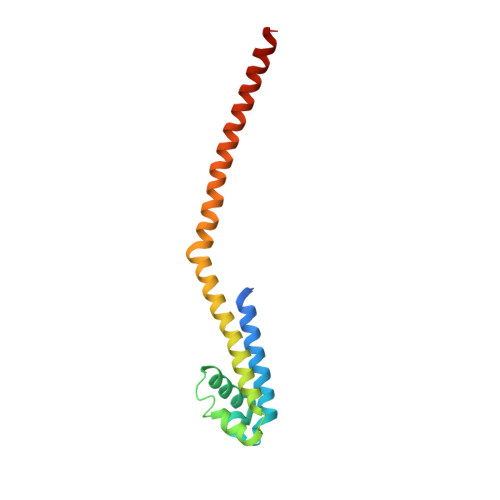Unfolding of a Temperature-Sensitive Domain Controls Voltage-Gated Channel Activation.
Arrigoni, C., Rohaim, A., Shaya, D., Findeisen, F., Stein, R.A., Nurva, S.R., Mishra, S., Mchaourab, H.S., Minor, D.L.(2016) Cell 164: 922-936
- PubMed: 26919429
- DOI: https://doi.org/10.1016/j.cell.2016.02.001
- Primary Citation of Related Structures:
5HJ8, 5HK6, 5HK7, 5HKD, 5IWN, 5IWO - PubMed Abstract:
Voltage-gated ion channels (VGICs) are outfitted with diverse cytoplasmic domains that impact function. To examine how such elements may affect VGIC behavior, we addressed how the bacterial voltage-gated sodium channel (BacNa(V)) C-terminal cytoplasmic domain (CTD) affects function. Our studies show that the BacNa(V) CTD exerts a profound influence on gating through a temperature-dependent unfolding transition in a discrete cytoplasmic domain, the neck domain, proximal to the pore. Structural and functional studies establish that the BacNa(V) CTD comprises a bi-partite four-helix bundle that bears an unusual hydrophilic core whose integrity is central to the unfolding mechanism and that couples directly to the channel activation gate. Together, our findings define a general principle for how the widespread four-helix bundle cytoplasmic domain architecture can control VGIC responses, uncover a mechanism underlying the diverse BacNa(V) voltage dependencies, and demonstrate that a discrete domain can encode the temperature-dependent response of a channel.
Organizational Affiliation:
Cardiovascular Research Institute, University of California, San Francisco, San Francisco, CA 94158, USA.

















